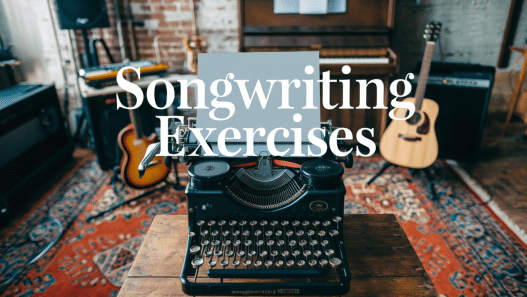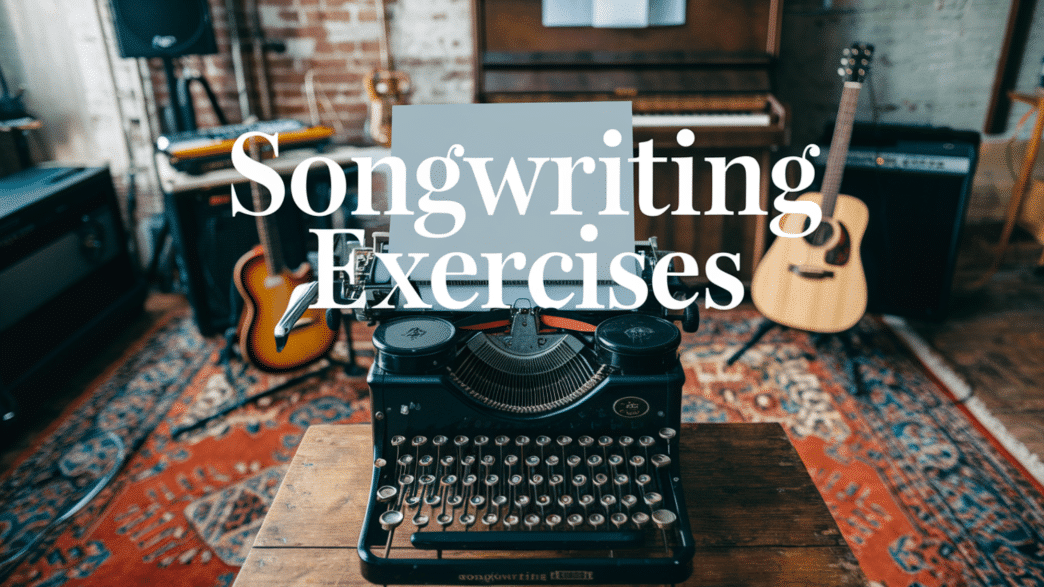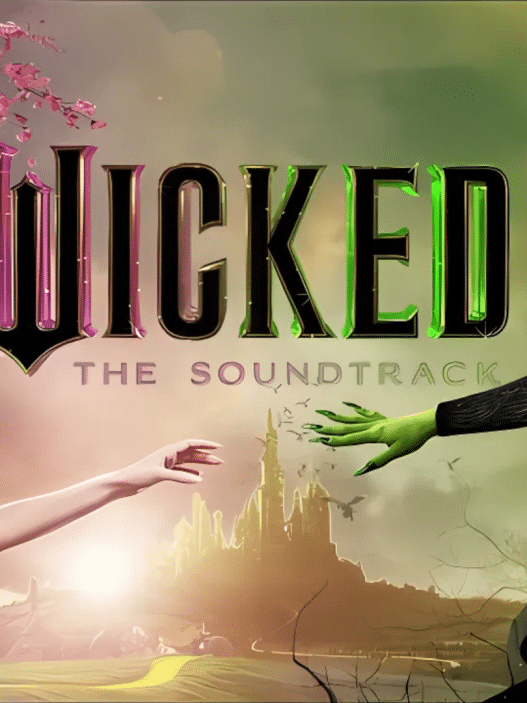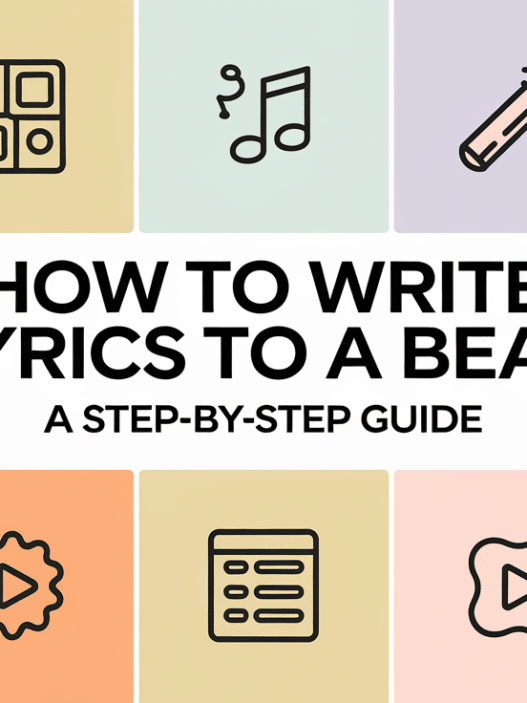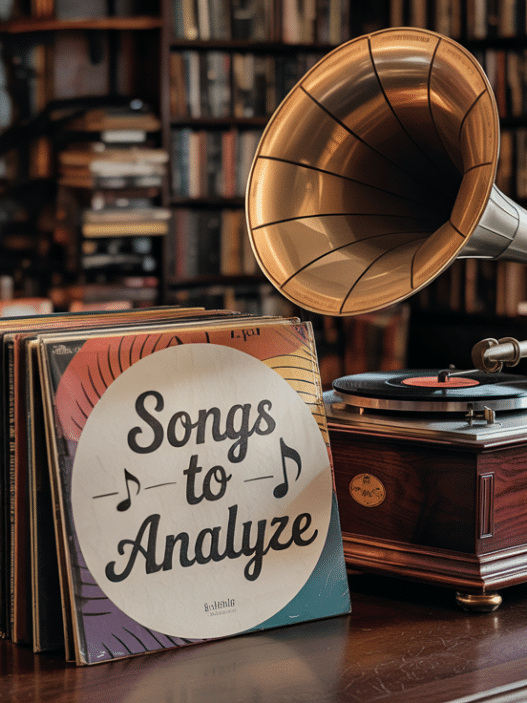Staring at a blank page? You’re not the only one.
Every songwriter, beginner or seasoned, has faced the frustrating silence of creative blocks. The good news? You don’t have to wait around for inspiration to strike.
Songwriting, like any craft, thrives on routine, structure, and a bit of experimentation.
In this blog, you’ll learn practical songwriting exercises designed to get your ideas flowing again.
From quick daily habits to partner-based activities and even advanced techniques that challenge your style, this guide covers it all, including helpful resources like books, courses, and tools to support your progress.
Why Do Songwriting Exercises Matter?
Like any other skill, consistently creating songs requires practice. Regular songwriting exercises cultivate essential habits that foster growth.
First, these exercises build discipline, training your brain to produce ideas on command rather than waiting for inspiration. This helps you finish more songs.
Second, structured exercises provide solutions when you feel stuck, offering specific techniques to generate new ideas.
Ultimately, targeted practice sharpens specific skills, enabling you to enhance your rhyming abilities, melodic development, and storytelling techniques.
What are the Best Daily Songwriting Exercises?

Consistent practice most effectively shapes your songwriting skills. These daily exercises take minimal time but yield substantial results when done regularly.
1. Write a 4-Line Verse Each Morning
Starting your day with brief writing builds a strong foundation for consistent songwriting skills over time.
Morning Setup:
- Set aside 5-10 minutes right after waking up
- Grab your notebook or open your digital note-taking app
Writing Process:
3. Write exactly four lines on any topic that comes to mind
4. Use simple rhyme patterns like AABB (where lines 1-2 rhyme and 3-4 rhyme) or ABAB (where lines 1-3 and 2-4 rhyme)
5. Don’t edit or judge your work – this is about building the habit
Organization Method:
6. Store all verses in one place (notebook or file)
7. Review monthly to spot potential song starters
Practice tip: If you get stuck, start with “Today I feel…” or describe something you can see. Remember, the goal is training your brain to write on command, not creating perfect verses.
2. One-Word Prompts
This focused technique helps break creative blocks by limiting your starting point to just a single word.
Preparation:
- Find a random word using a book, dictionary, or online word generator
- Set a timer for 15 minutes
Creation Steps:
3. Write a chorus (4-8 lines) that includes or relates to this word
4. Start by listing 5-10 words that connect to your prompt
5. Draft 2-3 different chorus options using your word list
6. Select the most promising idea to refine
Practice Schedule:
7. Try this exercise 2-3 times weekly
Practice tip: Keep a list of your prompt words and resulting choruses. When you’re low on song ideas, review this collection for inspiration or combine elements from different exercises.
3. Melody-Only Challenge
Separating melody creation from lyrics frees your musical thinking and often produces more natural song structures.
Recording Setup:
- Set up your phone’s recording app
- Take three deep breaths to clear your mind
Melody Creation:
3. Press record and sing or hum without words for 2-3 minutes
4. Don’t plan ahead – let the melody go wherever it wants
Review Process:
5. Wait at least an hour before listening back
6. Note timestamp spots where you hear something worth keeping
7. Try writing lyrics to fit these melodic phrases
Practice tip: Save all recordings with dates. Do this exercise when alone to remove self-consciousness. Even small 10-second segments can become the backbone of a great song.
What Group or Partner Exercises Help Creativity?

Making music with others can boost your creative output and introduce fresh ideas to your songwriting process. Try these collaborative exercises to break out of solitary writing patterns.
4. Songwriting Relay
This group activity challenges your creative limits by building on the ideas of other writers, resulting in songs with diverse influences.
Setup:
- Gather two or more songwriters in person or online
- Decide on a song structure (verse-chorus format, etc.)
- Set time limits for each contribution (5-15 minutes)
Process:
4. The first person writes an opening line or musical phrase
5. Pass to the next person who adds the following section
6. Continue until the song structure is complete
7. Review the finished piece together
Variations:
8. Assign specific sections to each writer (verse, chorus, bridge)
9. For remote teams, share audio files with each person adding new parts
Practice tip: Record the final creation and discuss which elements worked well. The most successful parts often come from the creative tension between different writing styles.
5. Cover Rewrite Challenge
Working with established melodies helps you focus purely on lyric craft while learning from successful song structures.
Selection Process:
- Choose a song with a strong melody that fits your vocal range
- Find an instrumental version or create a simple backing track
- Print or write out the original lyrics for reference
Writing Method:
4. Create a completely new topic for your version
5. Write lyrics that match the exact syllable count of the original
6. Pay attention to stress points where emphasis falls in the melody
7. Keep the same rhyme scheme as the original
Legal Considerations:
8. For practice only, use public domain songs or backing tracks with proper licenses
9. When sharing, clearly label as an exercise, not for commercial use
Practice tip: Record yourself singing both versions back-to-back to compare how different lyrics work with the same melody. This builds your understanding of how words and music connect.
Exercises for Lyrics, Melody, & Structure

Specific exercises for each songwriting component help strengthen your overall abilities. These focused techniques develop your skills in crafting compelling lyrics, creating memorable melodies, and constructing effective song structures.
6. The Object Writing Method
This focused approach builds your ability to describe everyday items with vivid details that appeal to listeners’ senses.
Preparation:
- Choose any ordinary object in your room (cup, pen, book)
- Set a timer for exactly 10 minutes
- Have your writing tools ready
Writing Structure: 4. Write about the object using all five senses:
- What you see (colors, shapes, details)
- How does it feel to touch
- What sound does it make or remind you of
- Any smells connected to it
- Any tastes you link with it
Application:
5. Circle the most striking phrases from your writing
6. Try using these sensory details in your next song
7. Practice this method 3-4 times weekly with different objects
Practice tip: Don’t worry about rhyming or song structure during this exercise. Focus only on creating rich sensory descriptions that you can draw from later.
7. Backwards Songwriting
Starting with your main point helps create songs where every section builds toward a clear and memorable message.
Planning Stage:
- Think about the core message you want to share
- Write this main idea as a short, direct statement
- Develop this statement into a complete chorus
Building Process:
4. List key points that support or explain your chorus
5. Turn these points into verse sections
6. Make sure each verse leads logically to your chorus
7. Add a bridge only if it offers a new perspective on your theme
Refinement:
8. Check that all sections point to your main message
9. Remove lines that don’t support your central idea
Practice tip: Record yourself singing just the chorus first. If it works as a standalone message, you’ve likely found a strong central point for your song.
Advanced Songwriting Exercises for Growth

Once you’ve established regular writing habits, these more complex exercises can push your skills to new levels and help you avoid creative stagnation.
8. Genre-Bending Writing
Working outside your comfort zone introduces fresh methods that can bring new life to your typical writing style.
Selection Process:
- List three musical styles you rarely or never write in
- Research basic patterns of these styles (chord progressions, rhythms)
- Select one style that feels most different from your usual work
Writing Method:
4. Start with a topic that fits the chosen style
5. Follow the typical structure of that genre
6. Pay attention to common phrases and word choices
7. Try to capture the feel without copying specific songs
Learning Points:
8. Note which elements feel most difficult or unusual
9. Identify at least three techniques you could apply to your normal style
Practice tip: Record your attempt even if it feels awkward. Listen back to spot moments where the new style brought out something fresh in your writing approach.
9. Write from Another Perspective
Creating songs from different viewpoints builds your storytelling skills and adds depth to your writing.
Character Selection:
- Choose someone notably different from yourself
- Research or imagine key details about their life
- List specific phrases they might use
Development Process:
4. Write down what this person wants or fears
5. Create a verse from their point of view
6. Make sure their unique voice comes through in word choice
7. Build a chorus that captures their main feeling
Refinement:
8. Read aloud to check if the voice stays consistent
9. Ask if someone would recognize this as a different person speaking
Practice tip: Try writing about the same situation from two opposing viewpoints to stretch your ability to see multiple sides of a story.
10. 60-Minute Song Challenge
Time limits often produce honest, direct writing by preventing the inner critic from taking control.
Preparation:
- Gather all needed tools before starting (instrument, recording device)
- Choose a topic or title before the clock starts
- Set a timer for exactly 60 minutes
Fast-Track Method:
4. Spend first 10 minutes outlining the overall structure
5. Write chorus in the next 15 minutes
6. Draft verses in the following 20 minutes
7. Use final 15 minutes to add bridge (if needed) and revise
Follow-Up:
8. Record a simple version before time runs out
9. Wait 24 hours before making any changes
Practice tip: Keep all your timed drafts, even those you don’t like. Later review often reveals strong ideas hidden in these quick creations that weren’t obvious at first.
Online Songwriting Exercises and Resources to Try
Finding the right tools and communities can significantly enhance your songwriting practice. These online resources offer structured guidance and feedback to help you improve.
| Resource | Type | What It Offers |
|---|---|---|
| Berklee Online Songwriting Course | Online Course | Weekly assignments, expert feedback, and songwriter forums for all skill levels. |
| Songtown Songwriting Community | Membership Platform | Writing challenges, peer critiques, and live workshops with professional songwriters. |
| YouTube Channels (e.g., Andrew Huang, Songwriting School of LA) | Free Video Content | Creative prompts, demos, and genre-specific exercises to inspire daily writing. |
Exploring these platforms can keep your practice fresh, focused, and supported by a like-minded community.
Recommended Books and Tools for Continued Practice

Supporting your songwriting practice with high-quality resources helps you continue to grow as a writer. Here’s a quick guide to essential books, apps, and tools that many successful songwriters rely on:
| Resource | Type | Description |
|---|---|---|
| Songwriting Without Boundaries by Pat Pattison | Book | Packed with writing exercises that boost creativity and lyrical depth. |
| Tunesmith by Jimmy Webb | Book | Offers pro-level songwriting tips with a strong focus on melody and structure. |
| RhymeZone | Website/App | A simple tool for finding rhymes, synonyms, and related words. |
| MasterWriter | Software | A premium toolkit with rhymes, alliterations, word associations, and phrases. |
| BandLab | Recording App | Free browser-based DAW for recording and producing song ideas quickly. |
| GarageBand | Recording App | Easy-to-use recording software for Apple users with built-in instruments. |
These tools serve as helpful companions to your writing practice, removing technical barriers so you can focus on creative expression.
Conclusion: Keep Writing, Keep Creating
The path to better songwriting is paved with consistent effort and a willingness to try new things.
These exercises give you structure, spark creativity, and help you grow your skills day by day as you refine your rhyme schemes, create fresh melodies, or learn new genres.
Even professional songwriters hit walls. What sets them apart is their toolbox of techniques and their commitment to keep writing.
By adding just one or two of these exercises into your routine, you’ll begin to see progress and feel more confident in your creative voice.
Ready to get started? Try one of the exercises above this week and share your experience in the comments. You might inspire someone else and find encouragement in return.
If you’re looking for beginner-friendly tracks to practice your vocals, our list of Easy Songs to Sing pairs perfectly with songwriting exercises to help spark your creativity and improve your songwriting skills.







